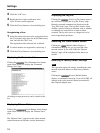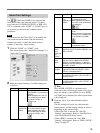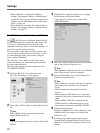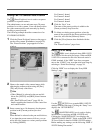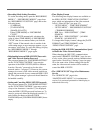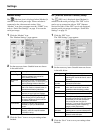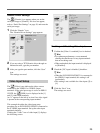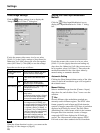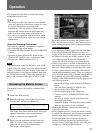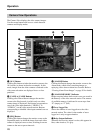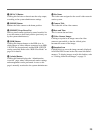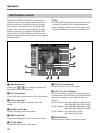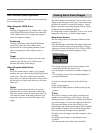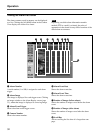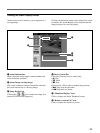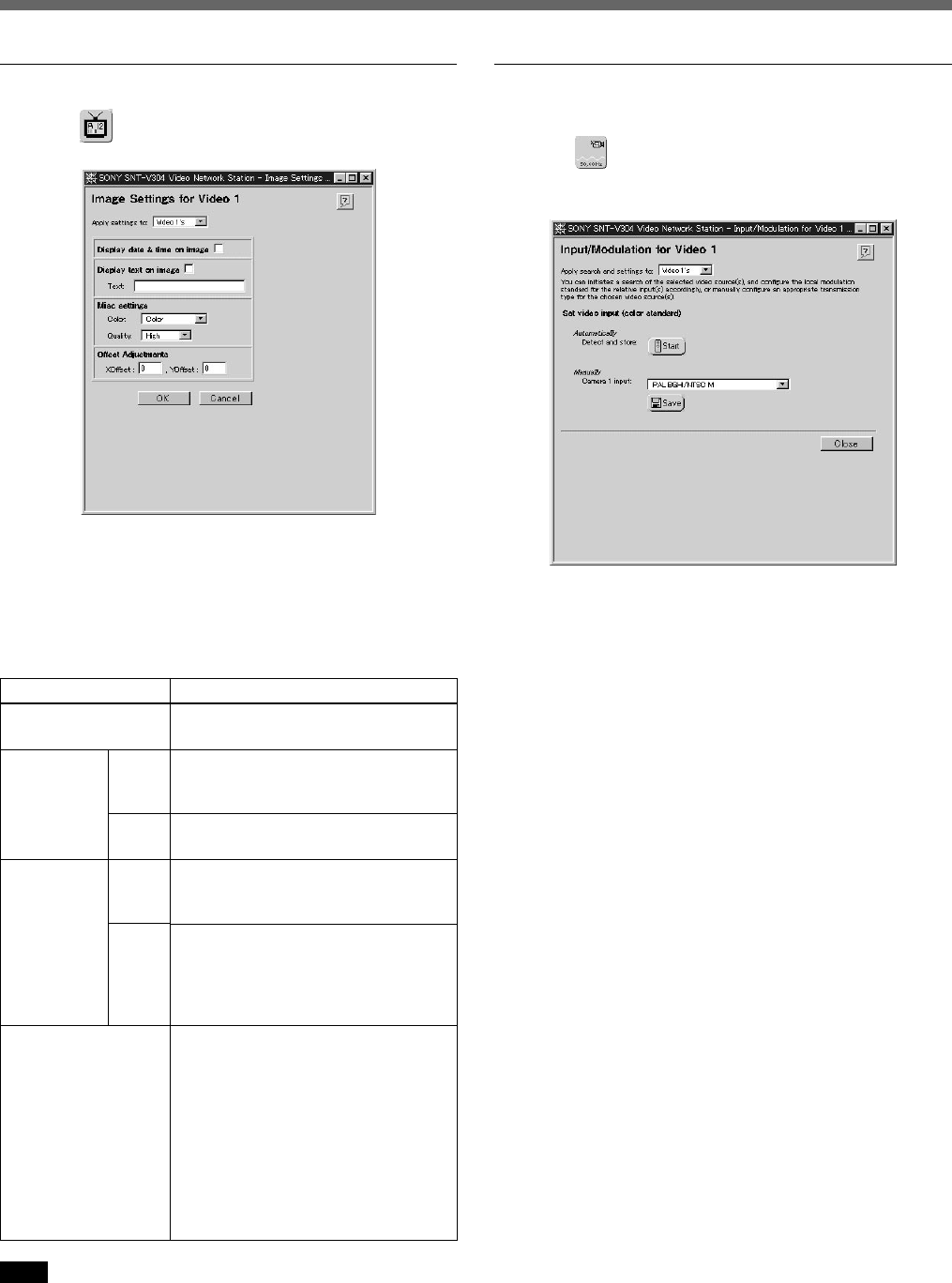
Settings
26
Setting
Display date & time
on image
Display text
on image
Text
Misc settings Color
Quality
Offset Adjustments
Description
Check this box to display the date
and time with the video image.
Check this box to display text such
as the camera title with the video
image.
Enter the text to display to be
displayed (up to 16 characters).
Select whether the video image is to
be displayed as color or
monochrome.
Select one of the five video image
quality ratios.
The highest image quality is [Hyper],
but this requires the largest image
file size and network bandwidth.
Enter the horizontal display position
of an image as the [X Offset], and
the vertical position as the [Y Offset].
The usable range for [X Offset] is –4
to +4 (pixels), and for [Y Offset], –2
to +2 (pixels). The [Y Offset] setting
is valid only when the image display
is [Fullsize]. Verify the monitor
screen after changing settings, and
correct the setting values if the
image does not display correctly.
Video Image Settings
Click the (Image settings) icon to display the
“Image Settings for Video 1” dialog box.
If only the current video source is to be set, select
[Video 1’s] in the [Apply settings to] drop-down list.
Otherwise, if all video sources are to be set together,
select [All Videos’]. Click [OK] to save the settings.
Items that can be set are as follows:
Note
When the Alarm function is active, you cannot set the
[Quality] of video images to [Hyper].
Setting the Video Input Modulation
Method
Click the (Video Input/Modulation) icon to
display the “Input/Modulation for Video 1” dialog
box.
If only the current video source is to be set, select
[Video 1’s] in the [Apply detection and settings to]
drop-down list. Otherwise, if all video sources are to
be set together, select [All Videos’]. Then select the
modulation method for the video input: either by
manual setting or automatic detection.
Automatic Setting
Clicking the [Start] button initiates testing of the video
source to detect the modulation type to be assigned to
the selected source.
Manual Setting
Select a modulation type from the [Camera 1 input]
drop-down list, and click the “Save” icon to save the
selection.
z Hint
Several different video modulation standards are
currently used in different regions. The NTSC video
format, generally used in Japan and North America,
consists of images composed of 525 lines of resolution
displayed at 60 fields per second. The PAL (Phase
Alternating Line) video format, which is the common
European television standard, consists of images
composed of 625 lines displayed at 50 fields per
second. The video network station supports NTSC,
PAL and several other standards derived from them.



